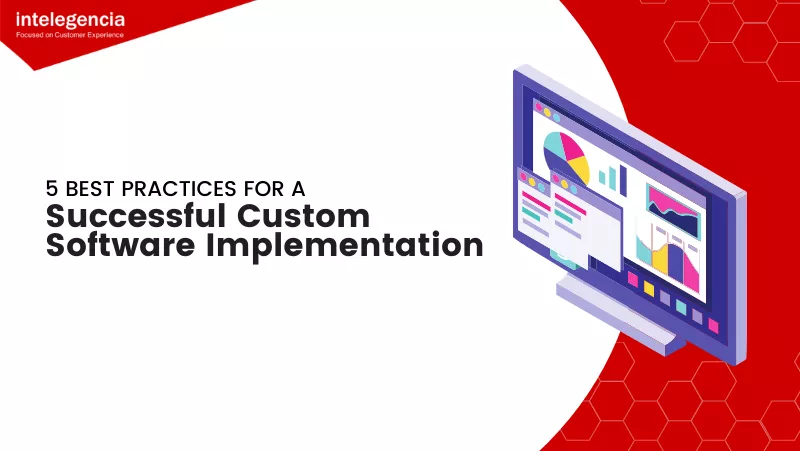5 Best Practices for a Successful Custom Software Implementation
 Glenda Tirona
January 22, 2021
Glenda Tirona
January 22, 2021
Did you know that the demand for software development services reached $391 billion in 2018? More and more companies rely on internal software systems to effectively manage their businesses. For any custom software development project, the goal is to make the client’s life easier by conceptualizing, designing, developing, and deploying a software program that fits their organizational needs.
Development companies follow a strict set of guidelines and different methodologies, but the industry has a list of best practices to make your development processes smoother.
5 Best Practices for Custom Software Development
- Keep your code simple
Keeping your code simple and easy to understand is a must when creating software. Always aim for code simplicity. Fellow professionals in the industry should be able to figure out, modify, or change your code if needed without having to run the system beforehand.
Code simplicity also goes together with other software principles such as DRY (Don’t Repeat Yourself) and YAGNI (You Aint Gonna Need It).
- You Ain’t Gonna Need It (YAGNI)
One important tip is to avoid coding a “have it all” system. Most programmers fall into the pit of trying to develop all functionalities at once. In the end, most of these functionalities become useless or unnecessary.
According to XP co-founder Ron Jeffries, the practice of YAGNI means to "always implement things when you actually need them, never when you just foresee that you need them.” This saves time and effort for programmers when modifying and debugging the code.
- Don’t Repeat Yourself (DRY)
Duplication is a waste. DRY is a software development principle meant to avoid redundancy in code by eliminating duplication in logic. Typically, this task is carried out with abstraction and automation. Copy-pasting your codes in different areas adds technical debt and increases the amount of work required to maintain the software.
Additionally, manual build and integration processes should be eliminated whenever possible to keep your code lean.
- Realistic Estimation
Giving an accurate estimation of the time and budget you need to complete a project is a must for quality assurance purposes. When you provide a timeline that you’re confident in, you can make the most out of the resources you were given and better manage your client’s expectations. Wikipedia’s list of coding estimation tools is a big help for newbie programmers who struggle with estimating their turnaround time.
- Test early and test often
A programmer’s worst nightmare is when clients find bugs that were overlooked before deployment.
To avoid this scenario, programmers often test software application codes in various ways to reveal potential bugs and defects that need to be fixed early. It might be a tedious task, but it pays off in the end. Finding and fixing problems along the way will help save resources rather than finding faults after implementation.
Glenda Tirona is an Operations Manager at Intelegencia. When she is not working, she Loves Goofing around and spending time with kids
Comment(s)
_BlogComment.Message
